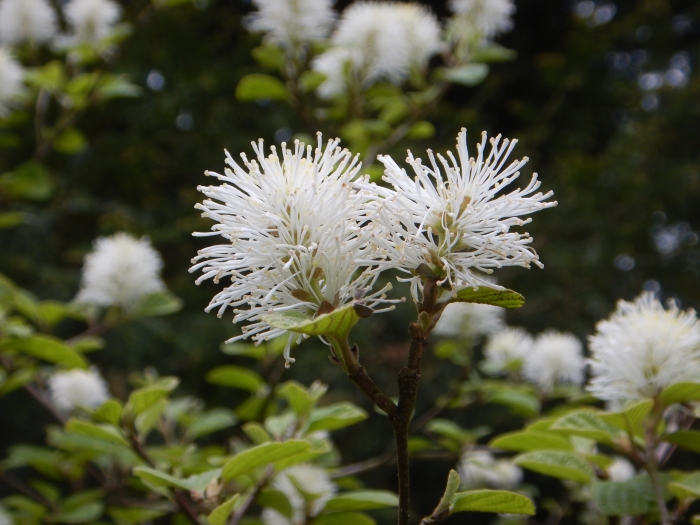Dwarf Witch Alder
(Fothergilla gardenii)
Dwarf Witch Alder (Fothergilla gardenii)
/
/

Schurdl
CC BY-SA 4.0
Image By:
Schurdl
Recorded By:
Copyright:
CC BY-SA 4.0
Copyright Notice:
Photo by: Schurdl | License Type: CC BY-SA 4.0 | License URL: https://creativecommons.org/licenses/by-sa/4.0 | Uploader: Schurdl | Publisher: Wikimedia Commons | Title: Fothergilla_gardenii_001.jpg | Notes: pattypan 19.06 |






















Estimated Native Range
Summary
Fothergilla gardenii, commonly known as Dwarf Witch Alder, is a slow-growing deciduous shrub native to the coastal plains, woodlands, bogs, and savannahs in the Southeastern United States. It typically reaches a maximum height and spread of 0.9 meters (3 feet) to 1 meter (3 feet). This plant features bottlebrush-like spikes of fragrant, creamy white flowers in the spring before the leaves emerge, adding to its ornamental value. The foliage is also noteworthy, turning to stunning shades of yellow, orange, and red in the autumn.
Dwarf Witch Alder is valued for its multi-season interest, including its spring flowers and exceptional fall color, which is most vibrant when the plant is situated in full sun. It is well-suited for woodland gardens, shrub borders, and as a foundation planting. While it prefers humus-rich, acidic, well-drained soil, it is adaptable to various soil types as long as they are kept moist. Dwarf Witch Alder is relatively low maintenance, but it benefits from mulching and regular watering during dry spells. It is not commonly afflicted by serious pest or disease problems, making it a resilient choice for gardeners.CC BY-SA 4.0
Dwarf Witch Alder is valued for its multi-season interest, including its spring flowers and exceptional fall color, which is most vibrant when the plant is situated in full sun. It is well-suited for woodland gardens, shrub borders, and as a foundation planting. While it prefers humus-rich, acidic, well-drained soil, it is adaptable to various soil types as long as they are kept moist. Dwarf Witch Alder is relatively low maintenance, but it benefits from mulching and regular watering during dry spells. It is not commonly afflicted by serious pest or disease problems, making it a resilient choice for gardeners.CC BY-SA 4.0
Plant Description
- Plant Type: Shrub
- Height: 3-4 feet
- Width: 2-4 feet
- Growth Rate: Moderate
- Flower Color: Cream, White
- Flowering Season: Spring
- Leaf Retention: Deciduous
Growth Requirements
- Sun: Full Sun, Part Shade
- Water: Medium
- Drainage: Medium, Slow
Common Uses
Bank Stabilization, Bee Garden, Bird Garden, Border Plant, Butterfly Garden, Deer Resistant, Fire Resistant, Fragrant, Low Maintenance, Showy Flowers, Street Planting, Water Garden
Natural Habitat
Coastal plains, woodlands, bogs, and savannahs in the Southeastern United States
Other Names
Common Names: Dwarf Witch Alder, Dwarf Fothergilla, American Wych Hazel, Coastal Witch-Alder
Scientific Names: , Fothergilla gardenii, Fothergilla alnifolia, Fothergilla parvifolia, Fothergilla carolina, Abrophaes mirabilis, Fothergilla alnifolia var. acuta, Fothergilla alnifolia var. obtusa, Fothergilla alnifolia var. serotina, Fothergilla anamelis
GBIF Accepted Name: Fothergilla gardenii L.